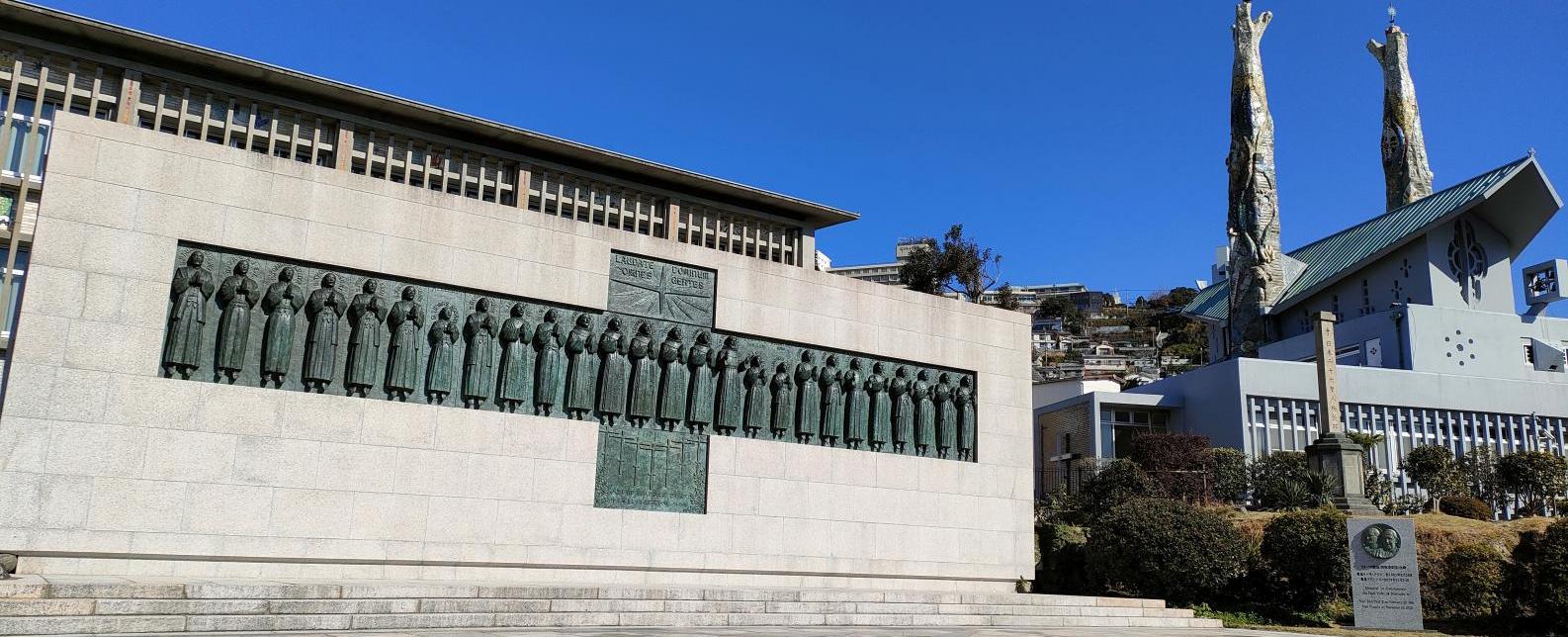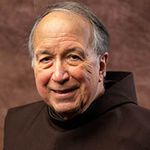Japanese Martyrs: 23 Franciscans Suffered for Being Christians

On February 6, Christians celebrate the memory of the first Japanese martyrs – 26 Franciscans and Jesuits crucified at Nagasaki in 1597.
Most of the martyrs were Franciscan
In the larger Church, these martyrs are honored under the name of one of the Jesuits as St. Paul Miki and Companions; however, most of them were Franciscans. As you can see from the Japanese painting below, six were Franciscan friar missionaries, headed by the Spaniard, Peter Baptist; besides three other friars from Spain, the group included a native Mexican friar, Felipe de Jesus, and a native of Portuguese India, Gonsalvo Garcia. The other Franciscans were 17 native Japanese Secular Franciscans, including three young boys who served Mass for the friars. The Church's general liturgical calendar focuses on Paul Miki, who as a candidate for ordination and a noted preacher, was the “stand out” of the native Japanese. In the Franciscan family, we honor them as Sts. Peter Baptist, Paul Miki, and Companions.

17th century depiction of the martyrdom of Sts. Peter Baptist, Paul Miki, and companions by a Japanese artist
Two different strategies for evangelizing Japanese society
These Franciscans and Jesuits all suffered for being Christians. The Jesuits had been in Japan longer – since Francis Xavier arrived in 1549 – and generally pursued a strategy of strategic inculturation – trying to reach out first to the more educated Japanese elite. Then, in 1593, some Franciscan friars of the Discalced Reform arrived in Japan from the Philippines. The group was headed by Pedro Bautista Blasquez, a native of Avila, Spain, who had first worked as a missionary in Mexico before going in 1584 to the Philippines, where he ministered for some years. Upon arriving in Japan, the friars immediately reached out to lepers and other marginalized people at the bottom of Japanese society and preached openly. Both of these strategies – the Jesuit and the Franciscan – were effective in drawing large numbers of people to become Christian. By the late 1500s, there were perhaps 300,000 Catholics in the country, arousing the growing suspicions of the military dictator Hideyoshi.
The unusual story of Felipe de Jesus
Felipe de Jesus (Philip of Jesus), the Mexican friar, had an unusual story. He had entered the Discalced Franciscans in Mexico as a young man; however, he left the Order after a few months and went to the Philippines, where he became a merchant. There he once again determined to devote his life to God and rejoined the Franciscans in 1590. After some years of formation, he was ready to be ordained and left the Philippines on a Spanish ship bound for Mexico. But the ship was driven off course, landing in Japan in July 1596; unfortunately, the ship was also found to be carrying some soldiers and cannon, heightening fears among the Japanese rulers that foreigners were planning to invade their country.

Saint Philip of Jesus (Museo Nacional del Virreinato, Tepotzotlan, Mexico)
Arrest and martyrdom
This new development soon precipitated the arrest of a group of missionaries and converts. After being rounded up, they were taken to the court of the dictator Hideyoshi in Miyako (Kyoto), where they were condemned to death on January 3, 1597. They were then led on a month-long forced march through various towns until they reached Nagasaki, where there was a large Christian population. Along the way, they had to endure cold weather, lack of food, and the jeering of the crowds. In Nagasaki, on February 5, the exhausted prisoners were bound to crosses with chains and ropes. The martyrs joyfully accepted their fate: the religious and their lay associates prayed, sang, and forgave their executioners as they hung from their crosses. Then executioners ran the body of each one through transversely with two spears.

The church of the Japanese martyrs in Nagasaki, Japan, was built in 1879.
Large-scale persecutions drove Christians underground
The deaths of these martyrs were the first in a series of large-scale persecutions that lasted to 1640, killing missionaries and thousands of native Japanese and driving the few remaining Christians in Japan underground for more than 200 years. The Japanese martyrs were canonized in 1862, just as Japan was opening up to trade with Western nations. The hidden Christians began to emerge in 1865, declaring themselves Catholic. Full freedom of religious expression was granted in 1871, allowing the Christian message to spread once more. Franciscan missionaries returned to Japan at the turn of the 20th century.
Saint Francis encourages those who bring the Gospel to others
Today, let us remember the encouragement of Saint Francis to his brothers and sisters who bring the Gospel to others:
All of them, wherever they may be, should remember that they gave themselves and abandoned their bodies to the Lord Jesus Christ. And for love of him, they must make themselves vulnerable to their enemies, because the Lord says, "Whoever loses his life for my sake will save it . . . and blessed are those who suffer persecution for the sake of justice, for the kingdom of heaven is theirs." (Earlier Rule, 16.10–12)
Cover image: The impressive bronze sculpture monument in Nagasaki honoring the 26 martyrs was created by Japanese artist Yasutake Funakoshi between 1958 and 1962. The museum attached was opened shortly thereafter.
Dominic Monti, OFM
Professor of Franciscan Research in the Franciscan Institute of St. Bonaventure University
Dominic V. Monti, OFM, is a Franciscan Friar of Holy Name Province (USA) and currently professor of Franciscan Research in the Franciscan Institute of St. Bonaventure University. He devoted the greater part of his ministry to teaching the History of Christianity, in particular the history of the Franciscan movement. He has contributed two volumes to the Works of St. Bonaventure series and is author of Francis & His Brothers, a popular history of the Friars Minor.

